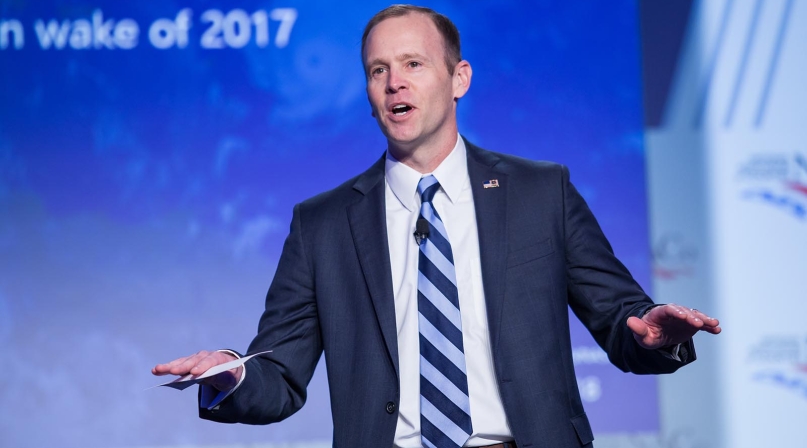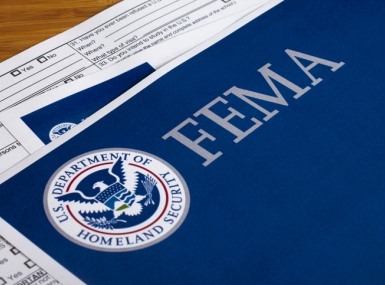Changing the FEMA Landscape
Author

Hon. William "Brock" Long
Upcoming Events
Related News

Dear National Association of Counties Membership –
Thank you for inviting me to speak at the National Association of Counties Legislative Conference. FEMA supports and shares your goal of creating healthy, vibrant and safe counties across the U.S.
FEMA is leaning forward, both strategically and operationally. We are building on the successes of 2017 and are learning from the challenges. These lessons learned also serve as foundational blocks in the 2018–2022 FEMA Strategic Plan.
Priorities of the plan include building a culture of preparedness, readying the nation for catastrophic disasters and reducing the complexity of FEMA. However, this Strategic Plan isn’t just for FEMA. It’s a strategic plan for the nation, and something we should all embrace.
Building a true culture of preparedness begins at every level of government, which spreads throughout our communities, and eventually reaches every person. During a disaster, individuals in affected communities are the first responders. We must empower individuals with lifesaving skills to help speed response and recovery efforts. We must also encourage our citizens to be financially prepared for disasters.
Closing the insurance gap, which is the difference between what is currently insured and what is insurable, is another priority. We need to double the amount of flood insurance coverage we have in the country, because any home can flood, and homeowners, renters and businesses recover more quickly when insured. Mother Nature doesn’t recognize flood zone maps, and we currently have too many people at risk. And it’s not just flood insurance, it’s insurance against high winds in hurricane and tornado-prone areas, and earthquake insurance to protect your investment.
Everyone should have the right insurance coverage for the hazards they face.
Only by using every tool at every level will we be able to shift this paradigm. How we communicate about risk is also of primary importance. Reducing risks to people and property helps build more resilient communities and saves taxpayer dollars. Developing resilient communities ahead of an incident reduces the loss of life and economic disruption.
As always, FEMA remains ready to support when catastrophic disasters occur, but all disasters should be federally supported, state-managed and locally executed. According to the Government Accountability Office (GAO), damages in 80 percent of presidentially-declared disasters fall below $41 million. We are looking at innovative approaches to allow states, tribes and territories to manage these incidents themselves. FEMA will continue to fund recovery for smaller disasters, while state, local, tribal and territorial governments play a much larger role in managing their own recovery programs.
Finally, FEMA is committed to simplifying our recovery processes and making our programs more user-friendly. More than 15 federal agencies have assistance programs to help survivors. FEMA will work with its federal partners to consolidate programs and streamline activities, to bring help to survivors in a more efficient manner.
Local leaders are some of the most trusted in government. It is critically important that your constituents hear from you early and continuously. Your role and influence in your communities are instrumental in building a safer and more resilient nation. It is at your level that conversations should begin about a community’s vision and commitment to its own preparedness, resilienceand recovery strategies in the case of major events.
I ask that you support this Strategic Plan, and adopt these goals as your own, so we can work together to build a better, safer and more resilient nation. Thank you for the work you do every day to make our country safer and stronger.
Sincerely,
Brock Long
FEMA Administrator
Attachments
Related News

States file lawsuit challenging FEMA’s new rules on emergency management grants
On November 4, a coalition of 12 states filed a lawsuit against the U.S. Department of Homeland Security (DHS) and the Federal Emergency Management Agency (FEMA), alleging that recent changes to key emergency management grants are unlawful and could disrupt state and local preparedness efforts.

County Countdown – Nov. 4, 2025
Every other week, NACo's County Countdown reviews top federal policy advocacy items with an eye towards counties and the intergovernmental partnership.
FEMA bill staffers offer insights into reform effort
NACo Intergovernmental Disaster Reform Task Force heard from staffers who helped shape a bill that would make dramatic changes to the Federal Emergency Management Agency.